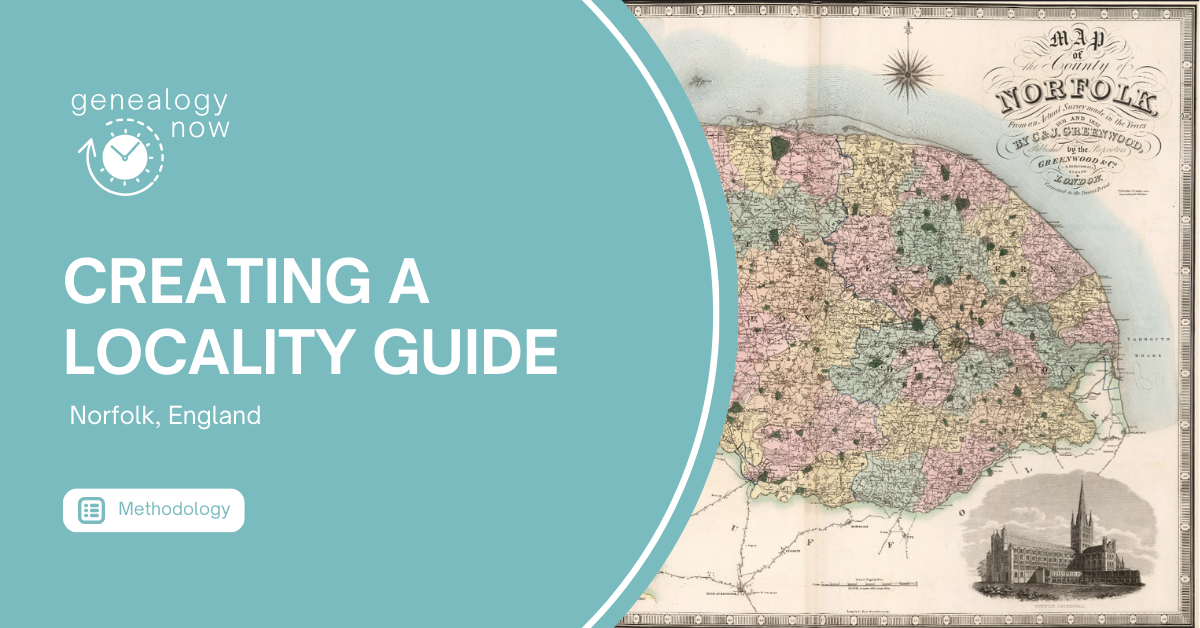
This series focuses on how I applied the steps in the Research Like a Pro process for a personal research project. I walked through these steps in a study group I participated in last fall. The first step was to create a research objective. This was mine: Trace the descendants of Robert Dale in search of potential autosomal and Y-DNA test takers. Robert was an agricultural laborer born on 30 August 1801 in Bracon Ash, Norfolk, England. Robert married Dinah Dawson on 13 October 1823 in Wreningham, Norfolk, England. He died in April 1879 in Flordon, Norfolk, England.
After creating my timeline, the next step in the process was to use the timeline to determine what locality or localities I would be researching. All the events in Robert and Dinah Dale’s lives took place in Norfolk County, England, so that became the subject for my locality guide.
I almost always begin my locality guides with a map of the locality. For this one, I found a historical map on the website A Vision of Britain Through Time that I decided to include. Next, I added some quick facts, like the county town (Norwich) and the date civil records began (1837). I included links to online research guides, additional maps, a timeline of major events, history, migration routes, genealogical and historical societies, and reference books about research in England.
Next, I added links to specific record collections that might prove useful in researching individuals who lived in Norfolk County (and England in general) from the early nineteenth century until the present. This is one tip when creating a locality guide. A locality guide can take a long time to create, so if you are planning to use it for a specific project, choose the time period you will be researching and look for resources for that period.
Here are some resources that I was really excited about:
- A list of surviving Church of England parish records for every county in England.
- Interactive Map to access information about all parishes in England.
- Norfolk, England, Church of England Births and Baptisms, 1813-1915.
- The 1939 Parish Register. This was a registration of the population of England in 1939, taken for administrative purposes related to the outbreak of World War II. Because the 1921 census is the most recent census available for England, this register could fill in some important gaps in my research.
- An abundance of Royal Navy records, which I was excited to explore, as one of Robert’s sons served in the Royal Navy.
- 123 People, a people finder site for locating living persons in the United Kingdom.
- I was especially excited that digital copies of birth and death records can be accessed almost instantly at the General Register Office website for a minimal fee. There is also a Probate Search Service for locating probate records and ordering digital copies of those, which was also quite fast and very affordable.
With these and other resources I discovered as I created my locality guide, I was ready for the next step in the Research Like a Pro Process: Creating a Research Plan. I will go over this step in the next post in this series.
